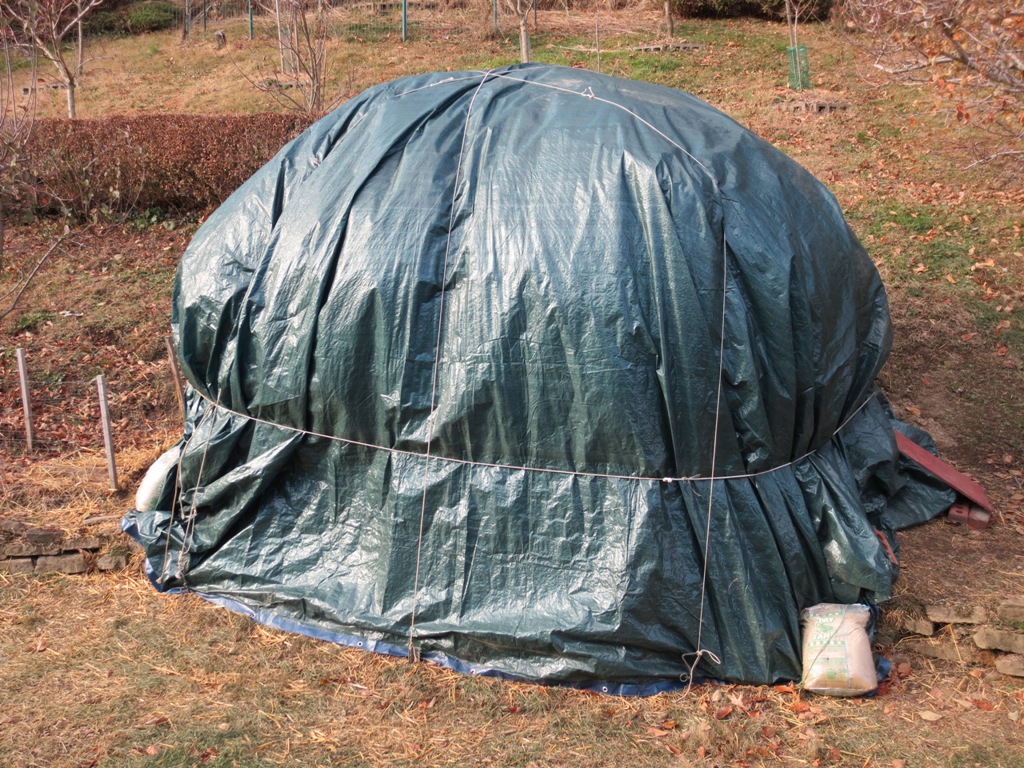Wrapping a Fig Tree - Savinell Style
Alan Savinell of Pittsburgh, Pennsylvania is a master at wrapping his fig trees. The two 20 foot, highly productive trees he cares for in his back yard were passed down to him from his grandfather an immigrant from Santa Maria a Vico near Naples, Italy. Alan credits all his gardening knowledge to his grandfather, but we’re pretty sure even his grandfather would be impressed by the inventiveness of his wrapping technique. Alan wrote this article explaining his method of winterizing the trees, so you can take a look for yourself.
COVERING OF THE FIG TREE FOR THE WINTER
By Alan Savinell
I currently have two fig trees in my yard that produce figs. One of the trees I believe is more than 60 years old. It was transferred from my grandfather’s yard in 1989 to my yard, and I have maintained the tree since then. Prior to 1989, my grandfather maintained this tree in his yard, and it was in his yard when I was very young. The other tree was started from a bundle of roots from the same tree – also in 1989.
I have both trees planted in the back yard and spaced approximately six feet apart. Originally, the trees could be bent and buried during the winter. However, as the trees grew older and larger, it was no longer practical to completely bury the trees, and I started to cover the trees instead. This describes the process that I follow to cover my fig trees. Since 1989, I have experienced one year approximately 10 years ago where the cold damaged the trees. Since then, I have followed the same procedure and have not had a problem with the winter cold on the trees.
During the summer months, the fig trees grow to approximately 20 feet in height. After the leaves have fallen from the fig trees, I bend and tie the branches from both trees toward each other – trying to make the pile as compact as possible. This usually results in a pile height of roughly 6 feet. As the branches grow in diameter from year to year, there are some that will not bend without breaking. I cut only those that can’t be bent and do no additional pruning in the fall.
After the trees are bent together, I stack bags of leaves around the trees. These are paper bags that I gather from the neighborhood in the fall. I place nearly all of the paper bags in a plastic bag to serve as a cover. This seems to keep the paper bags in better condition for disposal in the spring. This fall, I used roughly 60 bags of leaves around the trees. The top is covered with straw and bundles of ornamental grass – covering as much of the top branches as possible.
After the bags and straw and grass are in place, I cover the trees with tarps. This year, I used four covers – one being a large old canvas tent weighing approximately 100 pounds.
This year, I used four covers – one being a large old canvas tent weighing approximately 100 pounds. This year, I have added the option to heat the pile with a propane heater if the air temperature goes below zero. It includes a wooden box with a screen on top and a metal pipe connecting the box to the outside of the pile. The wooden box extends between the trunks of the two trees. The plan is to use the heater intermittently only if the temperature goes below zero.







